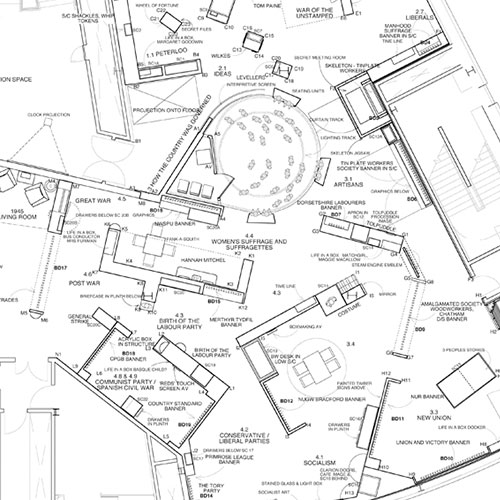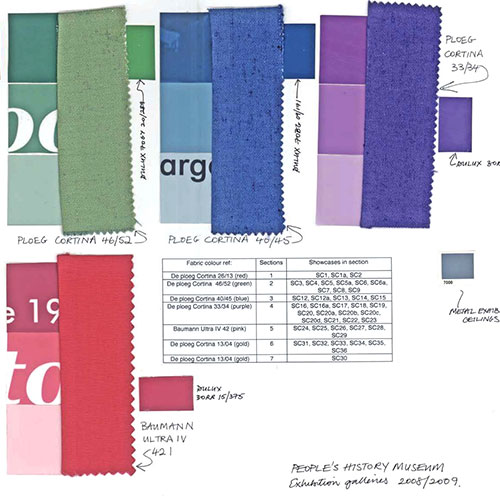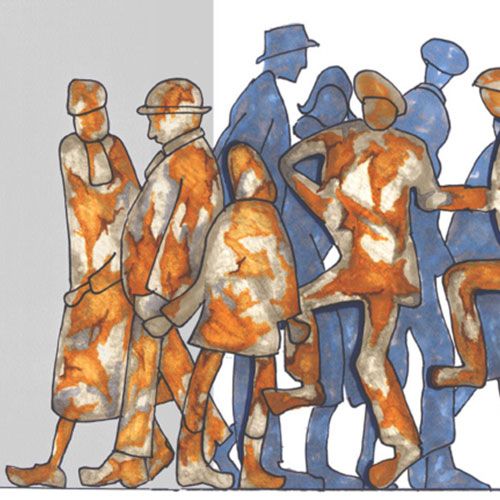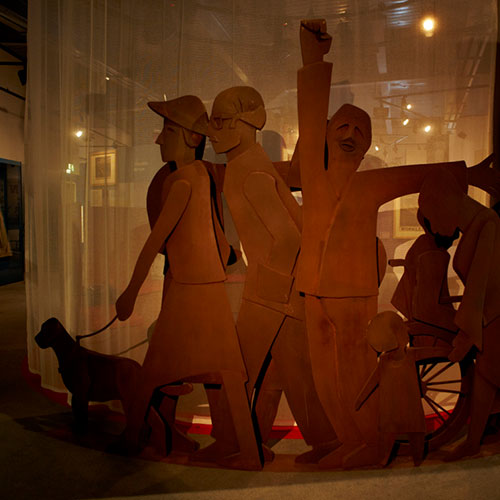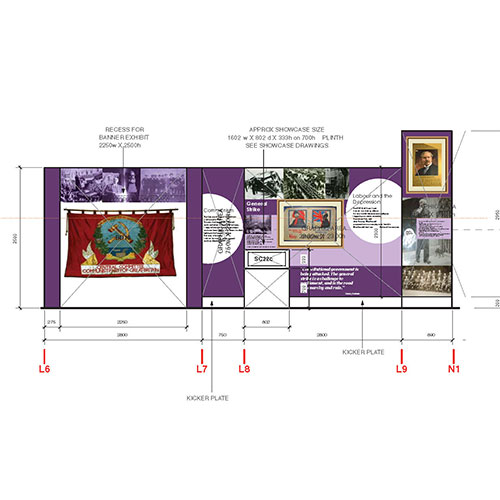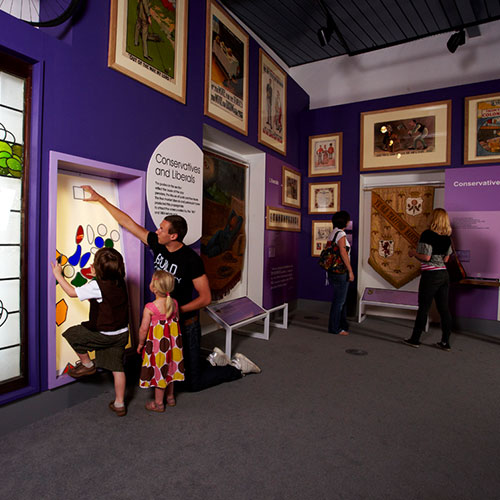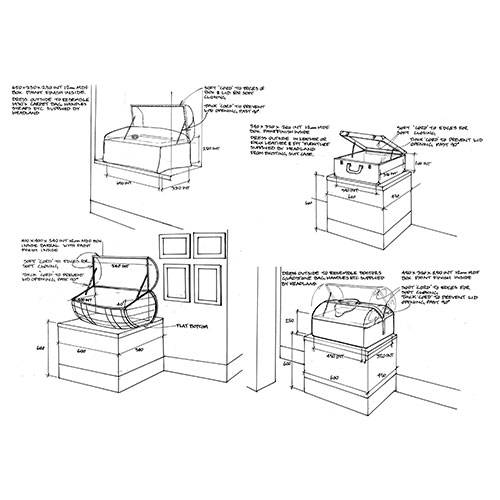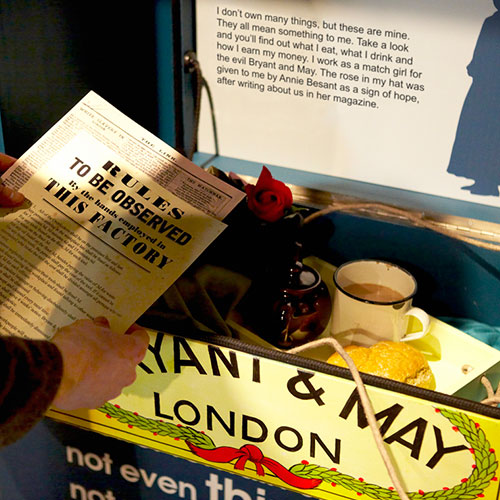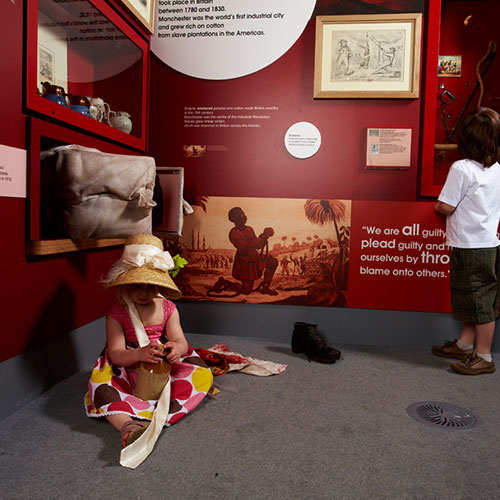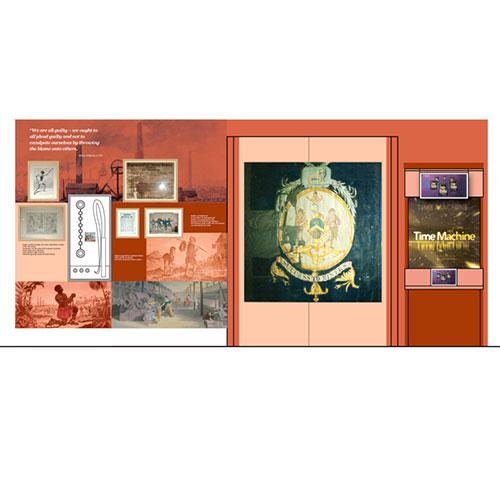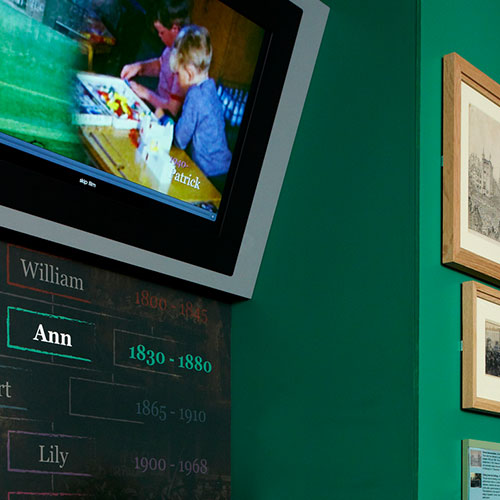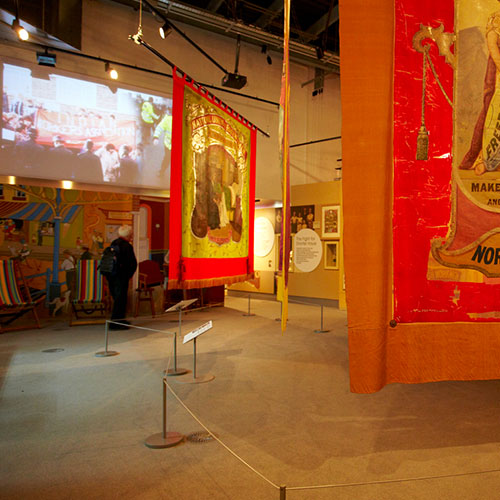The People’s History Museum
“This is such an amazing museum. While it’s not particularly large the displays in the two permanent galleries are incredibly dense. Packed with artefacts and a surprising amount of interactive content, the presentation is very modern, vibrant and evocative.”
When the £12.5 million re-development of the People’s History Museum took place, Headland designed and installed two large new galleries. The interpretive concept was developed around the title ‘Ideas have always been worth fighting for’ and included many visual and conceptual references to the human march towards democracy. The story is told through the eyes of and with the voices of ordinary people in an interpretive experience which reflects the strength and passion of both the ideas and the exhibits which it contains.
The inspirational collection includes the largest number of trade union banners in the world. The varied objects which include many posters, documents and works on paper are intensively displayed around themes like: Revolution, Reformers, Workers and Voters. Each theme is delineated by a strong symbolic colour providing atmospheric backdrops for the many poignant and beautiful objects and prints and the banners are displayed both in large showcases and on open display where visitors can walk amongst them.
Graphics, drawers and cupboards open to reveal objects and stories and the audio-visual presentations are creative, interactive and hugely atmospheric. ‘Life in a Box’ exhibits tell the stories of real people through handling objects and period telephones connect visitors to voices from the past. The galleries contain a series of room-sets, a ‘mini theatre’ for living history performances and ‘time machine’ touch-screen interactives reveal the impact of social and political progress on the lives of 8 generations. In both large gallery spaces, a ‘Speaker’s Corner’ exhibit enables visitors to experience a piece of inspirational oratory from the past within the pleasing internal curves of the modern extension.

